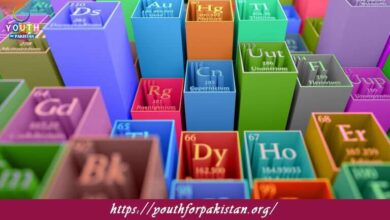9th Class Physics Chapter 7 MCQs with Answers

9th Class Physics Chapter 7 MCQs deals with the matter and its properties like density, pressure, and behavior of gases. In short, for Properties of Matter MCQs in the exam, it is most important to understand matter’s behavior under different conditions.
Core Topics of Properties of Matter
This chapter would test a lot of the key topics which include elasticity, viscosity, and fluid statics. Mastering the material in this chapter will help you approach related MCQs on Properties of Matter with ease.
The SI unit of mass is:
a) Kilogram
b) Gram
c) Pound
d) Newton
The property of matter that resists changes in its state of motion is called:
a) Mass
b) Volume
c) Inertia
d) Weight
The temperature at which a liquid changes into a gas at a constant pressure is called:
a) Freezing point
b) Melting point
c) Boiling point
d) Condensation point
Which state of matter has a definite shape and volume?
a) Solid
b) Liquid
c) Gas
d) Plasma
The property of matter that enables it to be drawn into wires is called:
a) Malleability
b) Ductility
c) Hardness
d) Elasticity
The change of a substance from a solid to a liquid state is known as:
a) Sublimation
b) Melting
c) Evaporation
d) Condensation
The property of matter that enables it to be hammered into thin sheets is called:
a) Malleability
b) Ductility
c) Hardness
d) Elasticity
The temperature at which a solid changes into a liquid at a constant pressure is called:
a) Freezing point
b) Melting point
c) Boiling point
d) Condensation point
Which state of matter has a definite volume but no definite shape?
a) Solid
b) Liquid
c) Gas
d) Plasma
The property of matter that allows it to return to its original shape after being stretched or compressed is called:
a) Malleability
b) Ductility
c) Hardness
d) Elasticity
The change of a substance from a liquid to a solid state is known as:
a) Sublimation
b) Melting
c) Evaporation
d) Freezing
The property of matter that resists changes in its shape is called:
a) Mass
b) Volume
c) Inertia
d) Weight
The temperature at which a liquid changes into a solid at a constant pressure is called:
a) Freezing point
b) Melting point
c) Boiling point
d) Condensation point
Which state of matter has no definite shape or volume?
a) Solid
b) Liquid
c) Gas
d) Plasma
The property of matter that allows it to be bent or twisted without breaking is called:
a) Malleability
b) Ductility
c) Hardness
d) Flexibility
The change of a substance from a gas to a liquid state is known as:
a) Sublimation
b) Melting
c) Evaporation
d) Condensation
The property of matter that resists changes in its state of rest is called:
a) Mass
b) Volume
c) Inertia
d) Weight
The temperature at which a gas changes into a liquid at a constant pressure is called:
a) Freezing point
b) Melting point
c) Boiling point
d) Condensation point
Which state of matter is a highly ionized gas with positive and negative ions?
a) Solid
b) Liquid
c) Gas
d) Plasma
The property of matter that resists changes in its shape is called:
a) Mass
b) Volume
c) Inertia
d) Weight
The change of a substance from a liquid to a gas state at temperatures below its boiling point is known as:
a) Sublimation
b) Melting
c) Evaporation
d) Condensation
The property of matter that resists changes in its state of motion is called:
a) Mass
b) Volume
c) Inertia
d) Weight
The temperature at which a solid changes into a gas without passing through the liquid state is called:
a) Freezing point
b) Melting point
c) Boiling point
d) Sublimation point
Which state of matter has a definite shape but no definite volume?
a) Solid
b) Liquid
c) Gas
d) Plasma
The property of matter that allows it to be drawn into wires is called:
a) Malleability
b) Ductility
c) Hardness
d) Elasticity
The change of a substance from a solid to a liquid state is known as:
a) Sublimation
b) Melting
c) Evaporation
d) Condensation
The property of matter that enables it to be hammered into thin sheets is called:
a) Malleability
b) Ductility
c) Hardness
d) Elasticity
The temperature at which a liquid changes into a solid at a constant pressure is called:
a) Freezing point
b) Melting point
c) Boiling point
d) Condensation point
Which state of matter has no definite shape or volume?
a) Solid
b) Liquid
c) Gas
d) Plasma
The property of matter that allows it to return to its original shape after being stretched or compressed is called:
a) Malleability
b) Ductility
c) Hardness
d) Elasticity
The change of a substance from a gas to a liquid state is known as:
a) Sublimation
b) Melting
c) Evaporation
d) Condensation
The property of matter that resists changes in its state of rest is called:
a) Mass
b) Volume
c) Inertia
d) Weight
The temperature at which a gas changes into a liquid at a constant pressure is called:
a) Freezing point
b) Melting point
c) Boiling point
d) Condensation point
Which state of matter is a highly ionized gas with positive and negative ions?
a) Solid
b) Liquid
c) Gas
d) Plasma
The property of matter that resists changes in its shape is called:
a) Mass
b) Volume
c) Inertia
d) Weight
The change of a substance from a liquid to a gas state at temperatures below its boiling point is known as:
a) Sublimation
b) Melting
c) Evaporation
d) Condensation
The property of matter that resists changes in its state of motion is called:
a) Mass
b) Volume
c) Inertia
d) Weight
The temperature at which a solid changes into a gas without passing through the liquid state is called:
a) Freezing point
b) Melting point
c) Boiling point
d) Sublimation point
Which state of matter has a definite shape but no definite volume?
a) Solid
b) Liquid
c) Gas
d) Plasma
The property of matter that allows it to be drawn into wires is called:
a) Malleability
b) Ductility
c) Hardness
d) Elasticity
The change of a substance from a solid to a liquid state is known as:
a) Sublimation
b) Melting
c) Evaporation
d) Condensation
The property of matter that enables it to be hammered into thin sheets is called:
a) Malleability
b) Ductility
c) Hardness
d) Elasticity
The temperature at which a liquid changes into a solid at a constant pressure is called:
a) Freezing point
b) Melting point
c) Boiling point
d) Condensation point
Which state of matter has no definite shape or volume?
a) Solid
b) Liquid
c) Gas
d) Plasma
The property of matter that allows it to return to its original shape after being stretched or compressed is called:
a) Malleability
b) Ductility
c) Hardness
d) Elasticity
The change of a substance from a gas to a liquid state is known as:
a) Sublimation
b) Melting
c) Evaporation
d) Condensation
The property of matter that resists changes in its state of rest is called:
a) Mass
b) Volume
c) Inertia
d) Weight
The temperature at which a gas changes into a liquid at a constant pressure is called:
a) Freezing point
b) Melting point
c) Boiling point
d) Condensation point
Which state of matter is a highly ionized gas with positive and negative ions?
a) Solid
b) Liquid
c) Gas
d) Plasma
The property of matter that resists changes in its shape is called:
a) Mass
b) Volume
c) Inertia
d) Weight
The change of a substance from a liquid to a gas state at temperatures below its boiling point is known as:
a) Sublimation
b) Melting
c) Evaporation
d) Condensation
The property of matter that resists changes in its state of motion is called:
a) Mass
b) Volume
c) Inertia
d) Weight
The temperature at which a solid changes into a gas without passing through the liquid state is called:
a) Freezing point
b) Melting point
c) Boiling point
d) Sublimation point
Which state of matter has a definite shape but no definite volume?
a) Solid
b) Liquid
c) Gas
d) Plasma
The property of matter that allows it to be drawn into wires is called:
a) Malleability
b) Ductility
c) Hardness
d) Elasticity
The change of a substance from a solid to a liquid state is known as:
a) Sublimation
b) Melting
c) Evaporation
d) Condensation
The property of matter that enables it to be hammered into thin sheets is called:
a) Malleability
b) Ductility
c) Hardness
d) Elasticity
The temperature at which a liquid changes into a solid at a constant pressure is called:
a) Freezing point
b) Melting point
c) Boiling point
d) Condensation point
Which state of matter has no definite shape or volume?
a) Solid
b) Liquid
c) Gas
d) Plasma
The property of matter that allows it to return to its original shape after being stretched or compressed is called:
a) Malleability
b) Ductility
c) Hardness
d) Elasticity
The change of a substance from a gas to a liquid state is known as:
a) Sublimation
b) Melting
c) Evaporation
d) Condensation
The property of matter that resists changes in its state of rest is called:
a) Mass
b) Volume
c) Inertia
d) Weight
The temperature at which a gas changes into a liquid at a constant pressure is called:
a) Freezing point
b) Melting point
c) Boiling point
d) Condensation point
Which state of matter is a highly ionized gas with positive and negative ions?
a) Solid
b) Liquid
c) Gas
d) Plasma
The property of matter that resists changes in its shape is called:
a) Mass
b) Volume
c) Inertia
d) Weight
The change of a substance from a liquid to a gas state at temperatures below its boiling point is known as:
a) Sublimation
b) Melting
c) Evaporation
d) Condensation
The property of matter that resists changes in its state of motion is called:
a) Mass
b) Volume
c) Inertia
d) Weight
The temperature at which a solid changes into a gas without passing through the liquid state is called:
a) Freezing point
b) Melting point
c) Boiling point
d) Sublimation point
Which state of matter has a definite shape but no definite volume?
a) Solid
b) Liquid
c) Gas
d) Plasma
The property of matter that allows it to be drawn into wires is called:
a) Malleability
b) Ductility
c) Hardness
d) Elasticity
If you are interested to enhance your knowledge regarding Physics, Chemistry, Biology, and Computer please click on the link of each category, you will be redirected to dedicated website for each category.





